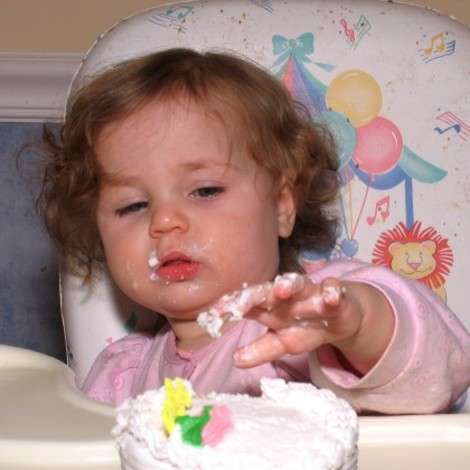High-Chair Injuries: Why Are Children Getting Hurt?

Lainie Gutterman is changing her ways.
Sometimes, the New York mom of two admitted, she didn't always fully strap her children into their high chairs.
Not anymore.
"I will no longer be lax," said Gutterman, who blogs at Me, Myself and Baby I, noting that she was "glad we haven't had a casualty yet in (the) past four years."
Gutterman's about-face comes in response to a new study reporting that more than 9,400 children are treated each year for high chair-related injuries.
Researchers at the Center for Injury Research and Policy of the Research Institute at Nationwide Children's Hospital, found that 93 percent of the injuries involved a fall, and the most common injuries were closed head injuries, such as concussions and internal head injuries, followed by bumps and bruises.
"High chairs are typically used in kitchens and dining areas, so when a child falls from the elevated height of the high chair, he is often falling head first onto a hard surface such as tile or wood flooring with considerable force. This can lead to serious injuries," Dr. Gary Smith, director of the Center for Injury Research and Policy, said in a statement announcing the study's results.
Perhaps most disturbing is that the number of accidents shot up during the study period by a whopping 90 percent: In 2003, there were more than 2,500 injuries reported, while 2010 saw nearly 4,800 reported injuries.
Smith, a professor of pediatrics at Ohio State University College of Medicine and a father of two, has personal experience with high chairs and believes they're safe when used correctly. In an interview with BabyZone, he explained that while researchers couldn't say for sure what was driving the increase, they do have their suspicions. Among them is the possibility that many parents are still using dangerous high chairs that have been among the millions recalled by the Consumer Product Safety Commission in recent years.
Smith said, in general, the rate that recalled products are returned is "dismal," so that "leaves us with conclusion that many defective high chairs in circulation and still being used in homes."
Another culprit may increase awareness of the dangers of concussions and other head injuries. Smith said that parents today may be more likely to take their children to emergency rooms for evaluation following a high chair fall.
The study, published in the journal Clinical Pediatrics, was based on data from the National Electronic Injury Surveillance System (NEISS), which is operated by the U.S. Consumer Product Safety Commission. Researchers found that in cases of injuries caused by falls, children were often climbing or standing right in their chairs before they fell, indicating that they likely were not strapped into their seats at those times.
Smith said using the chairs' safety restraint system is the top thing parents can do to keep their children safe.
But some moms can testify that safety restraints aren't foolproof.
Tiffany Burkitt Lyga said her son was strapped into a borrowed high chair while visiting his grandmother this past September, but he still managed to fall.
"Even being strapped in he was able to wiggle out and slipped through the bottom," the North Carolina mom told BabyZone. Fortunately, the boy emerged unscathed though the adults in the room were "startled."
In hindsight, Lyga says the straps should have been made tighter and that a loose seat cover also contributed to his fall.
"Needless to say, we went and bought a (new) booster seat for her house shortly thereafter," she said.
Smith questions whether, in Lyga's case, perhaps the high chair in question was among the many recalled. But he also noted that the improper use of restraint systems has been implicated in deaths by strangulation.
In the study report, researchers write that, "Misuse of restraint systems...can be as dangerous as not using them at all."
So what can you do to keep your child safe beyond just making sure he's strapped in? Nationwide Children's Hospital offers the following tips:
Only use chairs with a 3-point or 5-point harness that includes a crotch strap or post, and remember that trays are not sufficient to restrain children.
Teach your child that high chairs are for sitting and eating, not standing and playing. Teach older children not to climb on high chairs.
Keep the area around a high chair clean and away from objects that you don't want your child to grab. Also be aware that if a high chair is placed too close to a piece of furniture, a child can tip the chair over by kicking his feat against the furniture.
Make sure a high chair is stable--that includes locking wheels in place, if the high chair comes equipped with them. Consider chairs with wide bases, which are more stable than others.
Supervise your child during mealtimes to prevent high chair accidents as well as choking.
Check www.recalls.gov to see if your high chair was among those recalled in recent years.
There is some good news on the high chair safety front. High chairs are among the products that fall under the Consumer Product Safety Improvement Act passed in 2008 and amended in 2011. The act requires independent, third-party testing of products before they hit the market. That measure, Smith said, could head off future recalls of dangerous chairs.
- By Alice Gomstyn
MORE ON BABYZONE
Is your car seat correctly installed?
Parasites in sandboxes: Should you be worried?
Is your baby swing safe?

